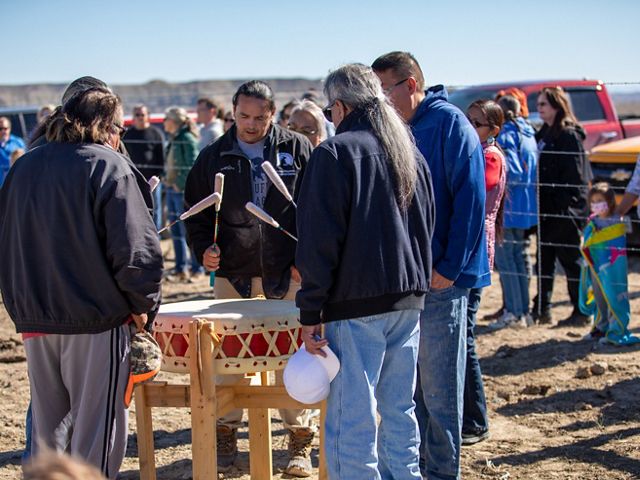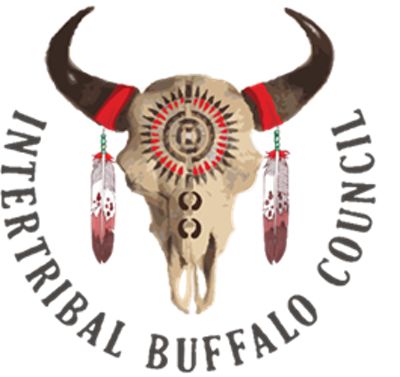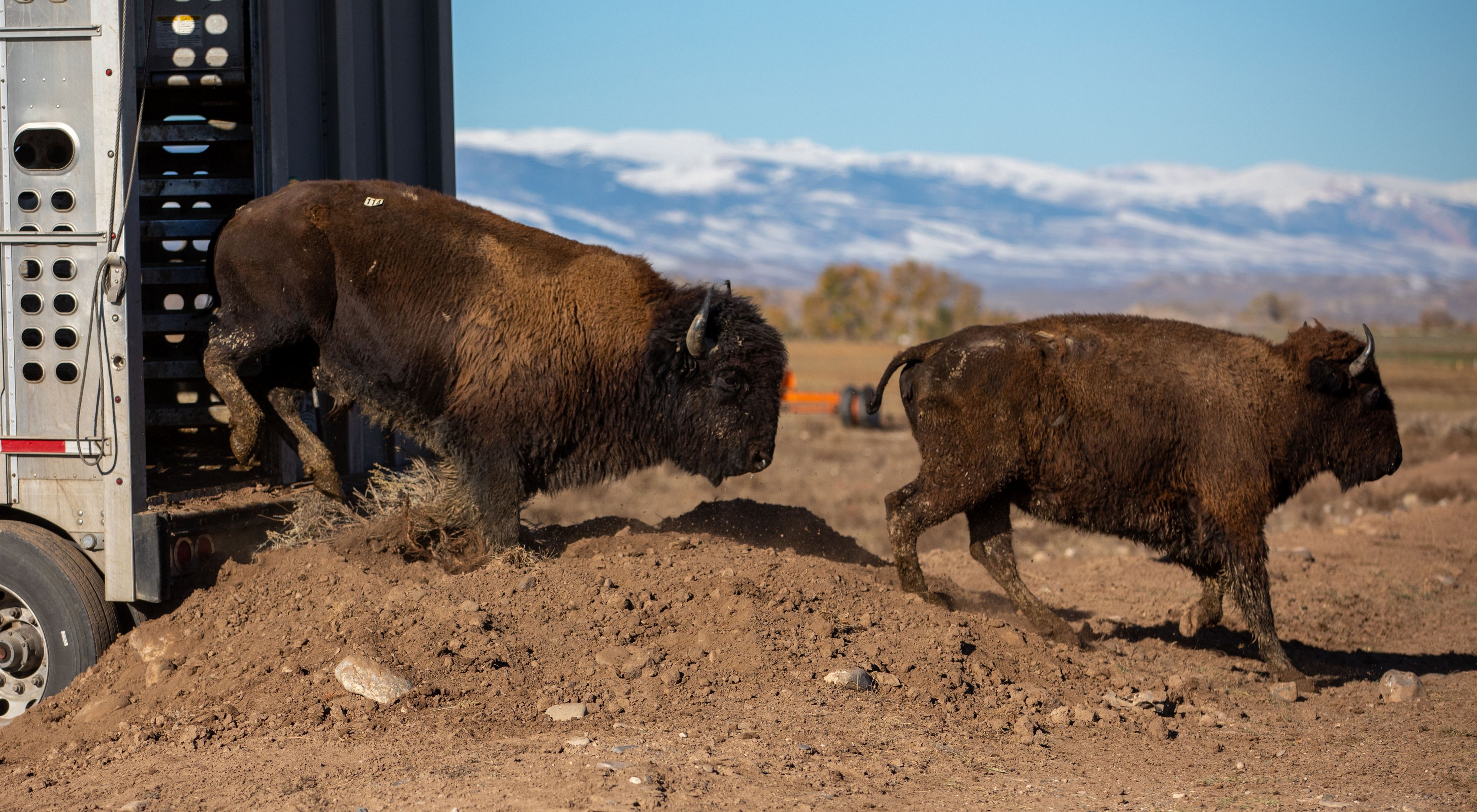Buffalo Head Home to Tribal Lands
This year's transfers serve as the largest restoration and preservation effort in InterTribal Buffalo Council's 30-year history.
Media Contacts
-
Megan Davenport
InterTribal Buffalo Council
Email: megan@itbcbuffalonation.org -
Isabel Morales
The Nature Conservancy
Email: isabel.morales@tnc.org
The InterTribal Buffalo Council (ITBC) is leading an effort to partner with Native American Tribes across the country to restore buffalo to their lands. This year the organization is celebrating its 30th anniversary with the largest transfer of buffalo in its history.
This milestone marks the ongoing restoration of the web of relationships that had been broken for hundreds of years, and honors the triumph by Tribal Nations to preserve buffalo and their historical, cultural, traditional and spiritual importance for future generations.
“The significance of buffalo extends beyond their physical presence on the land,” said Troy Heinert, Sicangu Lakota, ITBC Executive Director. “They represent a positive force toward spiritual and cultural revitalization, ecological restoration and conservation, food sovereignty, health, economic development and much more as each buffalo is brought back home.”
Buffalo are keystone species whose role is integral to thousands of natural relationships across North America. Their restoration on Tribal lands is an essential step in repairing these relationships which have been intentionally severed by the United States government, enabling colonization by European settlement and the ensuing violence against Native people as well as the extensive conversion of natural areas.

ITBC and partners, including The Nature Conservancy (TNC), are transferring approximately 1,500 buffalo to member Nations through its Surplus Buffalo Program, a network to translocate buffalo safely and efficiently to member Nations. Buffalo from TNC’s preserves will be transferred to member Nations in Nebraska, Oklahoma, Minnesota, South Dakota, Wisconsin and New Mexico.
“ITBC is a leader in the restoration of buffalo, and we celebrate their accomplishments which include bringing home more than 20,000 buffalo to Indigenous communities since its founding,” said Jan Glendening, North America Managing Director for The Nature Conservancy. “We are proud to support ITBC in their vision of healing and restoration for both people and nature.”
This program is a win-win, helping relieve grazing pressure on public and private lands while benefitting Tribes who want to start new, tribally managed herds, or grow and supplement existing herds through continuing restoration efforts.
For imagery, including b-roll and photography of the 2021 buffalo release at the Wind River Reservation in Wyoming, please visit this link.

About The InterTribal Buffalo Council (ITBC)
ITBC is a federally chartered Tribal organization, formed in 1992 as a gathering of 17 Tribes. Today, it now has a membership of 79 Tribal Nations and growing every year, sharing a mission to restore buffalo to Indian Country to preserve our historical, cultural, traditional, and spiritual relationship for future generations. To reestablish healthy buffalo populations on Tribal lands is to reestablish hope for Indian people. Returning buffalo to Tribal lands will help to heal the land, the animal, and the spirit of Indian people.
The Nature Conservancy is a global conservation organization dedicated to conserving the lands and waters on which all life depends. Guided by science, we create innovative, on-the-ground solutions to our world’s toughest challenges so that nature and people can thrive together. We are tackling climate change, conserving lands, waters and oceans at an unprecedented scale, providing food and water sustainably and helping make cities more sustainable. The Nature Conservancy is working to make a lasting difference around the world in 77 countries and territories (41 by direct conservation impact and 36 through partners) through a collaborative approach that engages local communities, governments, the private sector, and other partners. To learn more, visit nature.org or follow @nature_press on X.
